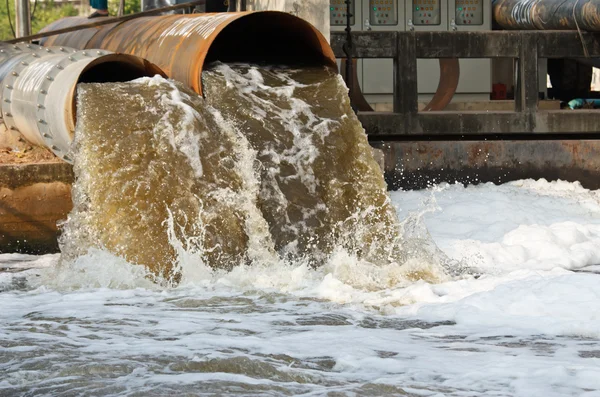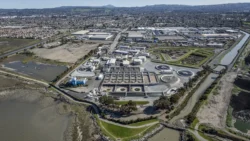What Is The First Stage Of Waste Water Treatment

What Is the First Stage of Wastewater Treatment?
Wastewater treatment is a critical process necessary for maintaining public health, environmental integrity, and sustainable water management. Water is a vital resource for life, and as urbanization and industrialization continue to grow, the systems that manage and clean our water also become more important. Understanding the stages of wastewater treatment can help us appreciate the complexity and significance of this process. In this article, we will explore the first stage of wastewater treatment, delving into its essential components, technologies, and the science behind its operations.
Understanding Wastewater
Before delving into the treatment process, it is essential to understand what constitutes wastewater. Wastewater is used water that comes from various sources, including:
-
- Domestic sources: Water from households, such as toilets, sinks, washing machines, and showers.
-
- Industrial sources: Water used in manufacturing processes, which can contain various chemicals and pollutants.
-
- Stormwater runoff: Water from rain that collects pollutants as it flows over roads, roofs, and other surfaces.
The wastewater from these sources contains a mix of organic and inorganic materials, including nutrients, pathogens, heavy metals, and chemical compounds. The goal of wastewater treatment is to remove or reduce these contaminants to make the water safe for discharge into the environment or for reuse.
The Stages of Wastewater Treatment
Wastewater treatment is generally divided into several stages, each with its own specific objective. The primary stages are:
-
- Preliminary Treatment
-
- Disinfection and Release
Each stage builds upon the previous one, progressively removing more contaminants and impurities. Our focus here will be on the first stage of wastewater treatment: preliminary treatment.
Preliminary Treatment: The First Stage
The preliminary treatment phase is crucial as it prepares wastewater for subsequent stages of treatment. By removing large solids and debris, this stage protects the infrastructure and equipment of the treatment plant from damage and ensures the efficiency of the overall treatment process.
Objectives of Preliminary Treatment
The primary objectives of preliminary treatment are:
-
- Screening and Removal of Large Objects: Protects downstream equipment from damage and prevents blockages.
-
- Grit Removal: Separates sand, gravel, and other particulate matter to prevent abrasion and equipment wear.
-
- Flow Equalization: Helps in managing the hydraulic load by equalizing flow rates during peak periods.
Let’s take a closer look at these components.
Screening: The First Line of Defense
Screening is the first step in the preliminary treatment process. It involves passing the incoming wastewater through screens to remove large objects, such as rags, sticks, leaves, and other debris. These materials, if not removed, can cause blockages and damage to pipes and pumps. The types of screens used vary from simple bar screens to complex mechanical systems.
Types of Screens
-
- Bar Screens: Consist of parallel bars spaced apart through which water flows. Debris larger than the gaps between the bars is caught and removed manually or mechanically.
-
- Fine Screens: Used after bar screens, fine screens have smaller openings and are effective at capturing smaller debris. These can be rotating drum screens or perforated plate screens.
-
- Micro Screens: Typically used after the grit chamber, micro screens are highly effective in removing fine particles that have passed through previous screening methods.
The choice of screen depends on the nature and volume of the wastewater and the specific requirements of the treatment facility.
Benefits of Screening
-
- Protection: Screens protect downstream equipment from damage and prevent blockages that can lead to operational disruptions.
-
- Efficiency: Removing large debris early on increases the efficiency and effectiveness of subsequent treatment stages.
-
- Waste Reduction: By separating large solids early, the treatment facility reduces the volume of waste that requires processing and disposal.
Grit Removal: Separating the Grit and Gravel
Once the large debris is removed via screening, the wastewater moves on to the grit removal phase. Grit chambers are designed to slow down the flow of wastewater so that heavier materials such as sand, gravel, and small stones can settle out. This stage is essential for preventing abrasion and excessive wear on pumps and mechanical equipment.
Types of Grit Chambers
-
- Horizontal Flow Grit Chambers: Water flows slowly in a horizontal direction, allowing grit to settle at the bottom. Mechanical scrapers or clamshell buckets are typically used for grit removal.
-
- Aerated Grit Chambers: Air is introduced into the chamber to create a spiral flow pattern, which encourages grit to settle at the bottom while keeping lightweight organic materials in suspension for removal later.
-
- Vortex-Type Grit Chambers: Water enters the chamber at an angle, creating a vortex that facilitates the settling of grit particles.
Benefits of Grit Removal
-
- Equipment Longevity: Removing grit extends the life of pumps and other mechanical equipment by reducing wear and tear.
-
- Improved Efficiency: By reducing the amount of heavy particulate matter, grit removal improves the overall efficiency of the treatment process.
-
- Cost Savings: Less maintenance and repair lead to operational cost savings.
Flow Equalization: Managing Hydraulic Load
Flow equalization is a critical aspect of preliminary treatment, as it helps manage variations in hydraulic load. Wastewater flow rates can vary throughout the day due to peak usage times or weather conditions such as rainfall. Flow equalization basins temporarily store excess wastewater and gradually release it at a controlled rate to the treatment plant.
Key Features of Flow Equalization
-
- Storage Basins: Designed to hold a large volume of water, these basins are used to store excess flow during peak periods and release it gradually.
-
- Pumping Systems: Pumps move the stored water back into the treatment process at a controlled rate.
-
- Level Control Systems: Sensors and control systems monitor water levels and adjust flow rates as needed.
Benefits of Flow Equalization
-
- Operational Stability: By smoothing out flow variations, flow equalization ensures stable operation of downstream treatment processes.
-
- Cost Efficiency: Reduces the need for oversized treatment facilities designed to handle peak flows, resulting in cost savings.
-
- Enhanced Treatment Performance: Consistent flow rates improve the efficiency and effectiveness of subsequent treatment stages.
Odor Control: Ensuring a Pleasant Environment
Another aspect of preliminary treatment is addressing odors that may emanate from incoming wastewater. Various techniques are employed to mitigate these odors, including:
-
- Chemical Addition: Adding chemicals such as chlorine or hydrogen peroxide to neutralize odors.
-
- Biofilters: Using biological processes to break down odor-causing compounds.
-
- Activated Carbon: Adsorption of odor molecules onto activated carbon surfaces.
Odor control is not only important for the comfort of facility workers but also for maintaining good relations with surrounding communities.
Technologies and Innovations in Preliminary Treatment
Advancements in technology and innovations have enhanced the efficiency and effectiveness of preliminary treatment processes. Some notable technologies include:
-
- Automated Screening Systems: Incorporation of automation and robotics in screening systems for more efficient debris removal.
-
- Advanced Grit Removal Equipment: Development of high-performance grit removal systems with improved separation capabilities.
-
- Real-Time Monitoring: Integration of sensors and IoT technologies for real-time monitoring of flow rates, grit levels, and other parameters.
Challenges and Considerations
While preliminary treatment is vital for efficient wastewater management, it presents several challenges and considerations:
-
- Debris Disposal: The debris removed from the water must be properly disposed of to prevent environmental contamination.
-
- System Maintenance: Regular maintenance of mechanical equipment, screens, and pumps is essential to maintain operational efficiency and prevent breakdowns.
-
- Customization and Adaptation: Treatment facilities must adapt their preliminary treatment processes to accommodate the specific characteristics of their local wastewater, including variations in flow rates and pollutant types.
Conclusion
Preliminary treatment is a vital first step in the wastewater treatment process. It involves the removal of large debris, grit, and the equalization of flow rates, all of which are essential for protecting downstream equipment and ensuring efficient treatment. Through screening, grit removal, and flow equalization, preliminary treatment sets the stage for the more advanced processes of primary, secondary, and tertiary treatment.
As technology and innovation continue to advance, wastewater treatment facilities are becoming increasingly sophisticated, enhancing their ability to manage and treat enormous volumes of wastewater efficiently. By understanding the intricacies of preliminary treatment, we can better appreciate the vital role this stage plays in protecting public health and the environment. As our global population grows and environmental challenges intensify, effective wastewater management will continue to be a critical component of sustainable development.

